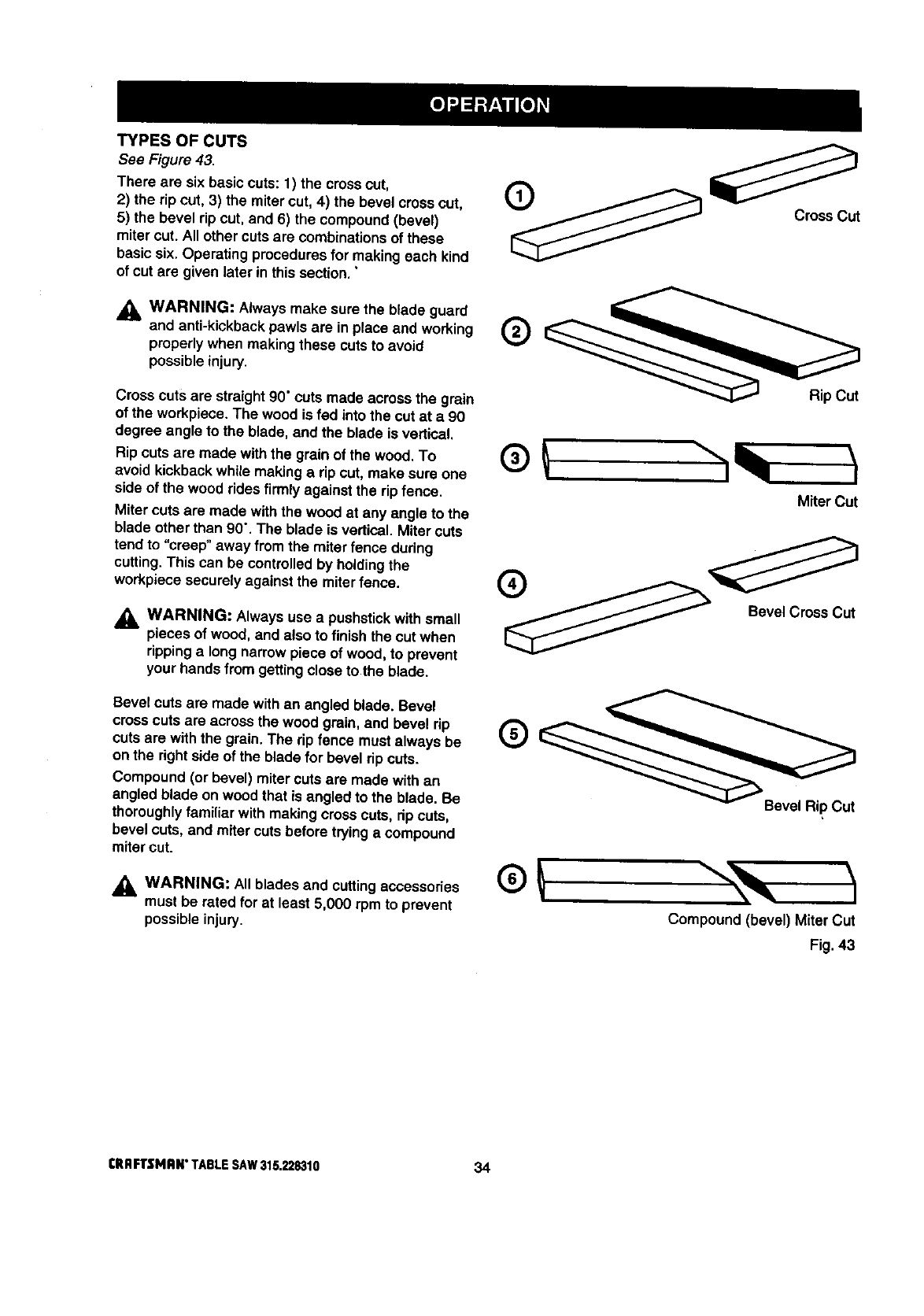
TYPES OF CUTS
See Figure 43.
There are sixbasic cuts: t ) the crosscut,
2) the ripcut, 3) the mitercut, 4) the bevel crosscut,
5) the bevel rip cut, and 6) the compound(bevel)
miter cut. Allother cuts are combinations of these
basicsix. Operating proceduresfor making each kind
of cutare given later in this sect'lon."
_. WARNING: Always make sure the blade guard
and anti-kickbackpawls are in place and working
properlywhen making these cuts toavoid
possibleinjury.
Cross cuts are straight90" cutsmade across the grain
ofthe workpiece. The wood is fed intothe cut at a 90
degree angle tothe blade, and the blade isvertical,
Ripcuts are made withthe grain of the wood. To
avoid kickbackwhile makinga rip cut, make sure one
side of the woodrides firmly against the rip fence.
Mitercuts are made withthe wood at any angle to the
bladeother than 90". The blade is vertical. Miter cuts
tend to "creep" away from the miter fence during
cutting.This can be controlledbyholdingthe
workpiece securelyagainst the miterfence.
_, WARNING: Always use a pushstickwith small
pieces of wood, and also tofinish the cut when
rippinga longnarrowpiece ofwood, to prevent
your handsfrom gettingcloseto the blade.
Bevel cuts are made with an angled blade. Bevel
crosscuts are across the wood grain, and bevel rip
cuts are with the grain.The ripfence must always be
on the rightside ofthe blade for bevel rip cuts.
Compound (or bevel) miter cutsare made with an
angled blade on woodthat is angled tothe blade. Be
thoroughlyfamiliar with making cross cuts, dp cuts,
bevel cuts, and miter cutsbefore tryinga compound
mitercut.
_, WARNING: All blades and cuttingaccessodes
mustbe rated for at least 5,000 rpm to prevent
possibleinjury.
CrossCut
®
MiterCut
o
Bevel Cross Cut
Bevel Rip Cut
Compound (bevel) Miter Cut
Fig. 43
tRRFTSNRN"TABLESAW315.228310 34


















